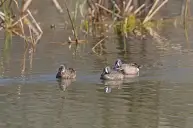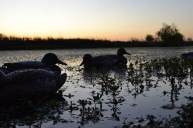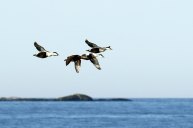As migrating ducks and geese make their way south for the winter, duck hunters from every corner of the United States knock the dust off their decoy spread, and prepare for what they hope will be a memorable season.
Fooling migrating ducks is tricky, as they have probably already seen a decoy spread, or heard a call this fall. For example, by the time mallards get to Arkansas, many hunters have already given those birds a run for it along the Mississippi flyway. Finding ways to differentiate your presentation to migrating birds can and will make all the difference for waterfowl hunters as fall turns to winter.
When discussing decoy spreads themselves, two tips can make any spread more lethal, regardless of circumstances. At ducks.org, an article was written which highlighted the practices of Rick Nemecek, who is longtime guide in Ohio. Nemecek places immense value on running darker bodied decoys in his spreads, especially later in the season. The reasoning is rather straightforward. As the year progresses, educated ducks fly higher above the marsh. In an effort to pull those birds down, Nemecek runs black and dark-colored decoys, which are more visible from a distance. Now, Nemecek's entire spread won't be made up of black bodied decoys. But, such a choice certainly makes his spread more visible to the flocks above.
Along with running darker bodied decoys, Nemecek also shapes his spread in an unorthodox manner. While many duck hunters rely on the classic "J" and "U" shaped spreads, Nemecek does not prefer to orient his spreads in such a way. Rather, Nemecek will create "family groups" of decoys, made up of 3 to 6 decoys. Those groups, or pods, will then make a loose "J" or "U" shape, but they do say without much uniformity.
Small Adjustments Can Make For Big Differences In A Decoy Spread
Nemecek places a lot of focus on making his spread standout. Be it darker than usual decoys, or an intently nonchalant shape, Nemecek's spreads are built to look different. And in a game of minute details, such choices can seem risky on their surface. Only once those choices pay off, with ducks diving into a hunter's spread, will they truly be appreciated.




